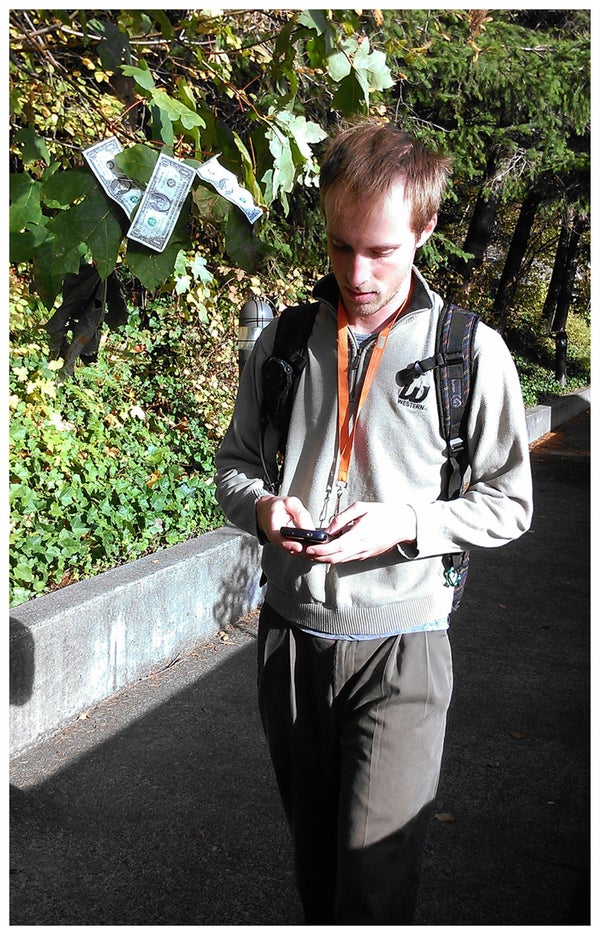This article was published in Scientific American’s former blog network and reflects the views of the author, not necessarily those of Scientific American
Adults love to commiserate about the woes of kids and their short attention spans. Wandering from task to task, craving frequent changes in stimulation, missing obvious things around them – what hope can we have in the future? And technology is just making it worse! Well, adults, consider taking a few minutes to learn about the ways all of our brains, regardless of age, take cognitive shortcuts to interact with the world around us. That knowledge can help shape the ways we enable young people to notice one particularly slippery concept: change. So set your timer for five minutes and see if you can get to the end of this article before clicking away.
As instruments, our senses are actually pretty impressive. Researchers have long suggested that humans would be able to see the light from a candle from hundreds of yards away, and recent work has even found that the rods in the human eye can sense the presence of even a single photon. Scientists at the National Institute for Standards in Technology found that the tactile sensitivity of human fingers goes down to the nanoscale. To get a sense of some of your own abilities, take 40 seconds on the video below.
On supporting science journalism
If you're enjoying this article, consider supporting our award-winning journalism by subscribing. By purchasing a subscription you are helping to ensure the future of impactful stories about the discoveries and ideas shaping our world today.
Even if you have seen something like that video before, it is a good reminder that as amazing as our bodies are as sensing information, our brains have to determine the best way to sort through it. Think about the seat you are sitting on right now. That seat was important to notice while you were trying to sit on it, but now that you are in place your brain doesn’t need to alert you constantly to the way the cushion feels against your legs. We cannot possibly perceive everything at all times, so we select. And those selections leave holes for information to fall through.
Some of the more dramatic holes facilitate inattentional blindness, like missing the gorilla in the video above. Other versions of these studies include change blindness, like when individuals fail to notice that the person they are talking to suddenly changes height, age, race, or gender when a map or large piece of wood passes between them (such videos are definitely worth a few minutes of internet entertainment). When giving a group presentation about inattentional blindness in undergrad, each member of our group managed to step into a supply closet and change outfits and hairstyles without anyone in the class noticing. And those changes happened over a matter of minutes. What about the changes that happen in months or years?
We cannot make ourselves constantly aware of every sound, sight, and smell in our surroundings and still function, but we can take purposeful steps to move certain signals from irrelevant to relevant in our lives. Just think about the people who can suddenly identify the sound a bird or passing car while in the middle of a conversation. The details of how are up to you, but making yourself or the young people in your life more observant of change means facilitating two things: reference points and a reason to look.
To some extent you do this naturally every time you try to assess change. Did it snow more last year than the year before? Most people probably would not have an estimate of total snowfall in inches to compare from year to year, but they may remember having to get up earlier or more often to shovel before work. Trying to determine if you are eating fewer vegetables would rely on memories of shopping lists and changing waistlines. One of the most popular examples is what entomologists call windshield phenomenon: an awareness that insect populations have dropped dramatically based on the much-cleaner windshields on long drives.
Each of those examples uses past experience as a distinct baseline – something against which to measure future change. But kids don’t necessarily have years of shoveling snow or washing windshields to pull from. Providing reference points for kids takes a bit more creativity and probably a bit of record keeping.
Consider making a natural calendar for your neighborhood. Pick a few trees, a few types of flowers, and maybe a major weather event like the first snow. Mark on the calendar the date when the leaves of those trees first change color each year, when they start to fall, when the buds start to form, and when green leaves start to appear again in the spring. What was the date of the first snow, or the first snow that stuck on the lawn? On what date did the flowers start to poke green shoots up through the dirt, and when did the first blossoms open? It’s fall, so planting some perennials now for the spring could give young people the perfect chance to create a new measure all their own.
Creating a natural calendar may not have the flash of building a bottle rocket, but it does provide both a baseline and a reason to look. And deciding to look, even if it is just at a few specific trees, suddenly makes that information relevant for your brain to notice. It makes those changes worth paying attention to. It’s harder to be blind to something when you give yourself a reason to look, so come up with a reason and see what you can see.
